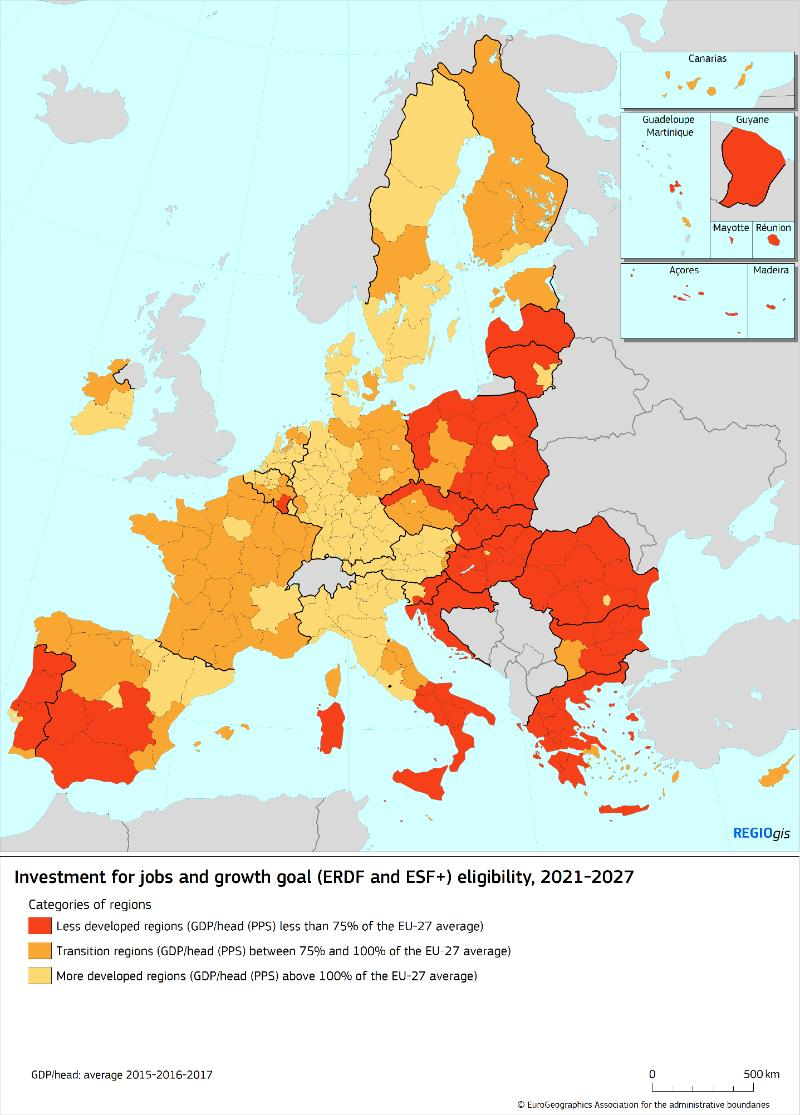
- New cohesion ambition: EIB will aim to increase share of EU financing for cohesion regions from 30% to 45% by 2025.
- Stronger focus on less developed regions: by 2025, 23% of all EIB financing in the European Union will go to less developed regions.
- Increased support for innovation and the private sector in cohesion regions.
The Board of Directors of the European Investment Bank (EIB) on Wednesday approved the cohesion orientation paper that sets out the new framework for the EIB’s cohesion action for 2021-2027. The Board, composed of representatives of all EU Member States, made more funding available for public and private sector projects in cohesion regions — those with a gross domestic product (GDP) per capita below the EU average. The decision also lays the foundation for increasing climate action and environmental lending in poorer regions, fostering innovation in cohesion regions and ensuring that EIB financing complements EU cohesion policy funds in the new seven-year EU budget. The EIB’s cohesion financing, advisory and fund management services aim to reduce regional disparities by supporting projects in the European Union’s poorer regions.
The cohesion orientation paper focuses on five new commitments:
1) The EIB will aim to increase its financing for cohesion regions to 45% of its annual EU lending by 2025.
2) The EIB will dedicate 23% of its annual EU lending to less developed regions (those with a GDP per capita of less than 75% of the EU average) by 2025.
3) The EIB will finance mid-cap companies (companies with between 250 and 3 000 employees) in less developed regions to deploy proven technologies for the first time when these projects show clear economic or environmental benefits at the local level.
4) In cohesion regions, the EIB will facilitate access to finance for mid-cap companies through direct lending.
5) The EIB Group will conduct a mid-term review of the cohesion orientation paper in 2023.
EIB Vice-President Lilyana Pavlova, who is responsible for cohesion policy and cohesion financing, commented: “One of the founding missions of the European Investment Bank is to pull the European Union closer together by investing in its poorer regions and communities. We have successfully done so for more than 60 years. The EIB’s cohesion orientation paper for the next seven years sets out a clear new ambition so that our cohesion action can meet the socioeconomic and environmental challenges of our time. We especially have to ensure that no people or places are left behind in Europe’s transition to a modern, low-carbon, climate-resilient and digital economy and society.”
The EIB and cohesion
Financing projects that help strengthen the economic, social and territorial cohesion of the European Union has been at the heart of EIB operations since its foundation in 1958. Over the last seven years, we have provided €123.8 billion to projects in EU cohesion regions. In 2020 alone, this amounted to nearly €20 billion. Economic modelling shows that EIB lending had a strong macroeconomic impact on cohesion regions with a GDP impact of up to 2%.
Our lending in cohesion areas covers the full spectrum of economic activity and must fall under at least one of the EIB’s four priorities: innovation, infrastructure, small and medium-sized enterprises (SMEs) and environmental sustainability. EIB cohesion priority regions encompass less developed regions (GDP per capita of less than 75% of the EU average) and transition regions (GDP per capita of between 75% and 100% of the EU average), as defined by the EU cohesion policy map (see Annex 1).
Download the cohesion orientation paper
Read the article by Vice-President Pavlova: Modernising cohesion policy to help fight climate change in poorer EU countries (eib.org)
Media interviews
If you are interested in interviewing EIB Vice-President Pavlova, Vice-President Mourinho Félix or our experts, please get in touch.
Annex 1:
